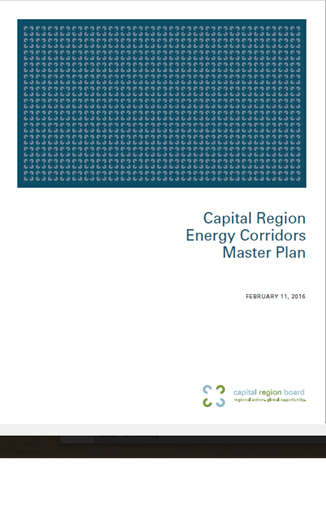Capital Region Energy Corridors Master Plan (2016)
Executive Summary
The Capital Region Board recently approved a vision statement for the first 5 year update to the Capital Region Growth Plan. Embedded in the vision are two elements at the core of energy corridor planning:
“The Edmonton Metropolitan Region is the dominant hub for northern Alberta”
and
“is globally recognized for its… leadership in energy development”.
If the Edmonton Metropolitan Region is the hub, then the petroleum pipelines and power transmission lines extending into and out of the Region are the spokes which drive the energy industry and the Canadian economy. Energy corridors are the essential networks that maintain the economic viability of the petrochemical energy cluster in Alberta’s Industrial Heartland and continued success of existing refining activities.
Over 40% of Alberta’s GDP is generated in the Edmonton Region. While the current low price of oil may result in a slowing of the economy over the next year or two, the Region is fully aware of the cyclical nature of a boom and bust resource industry. Planning for the next economic boom is critical to ensuring the region remains globally competitive and continues to prosper and thrive. This means planning for the people that are going to come to the Region to take advantage of the opportunities.
Between 2006 and 2011 the population of the Capital Region grew by over 12%, one of the fastest growing areas in Canada, driven mostly by the influx of skilled workers needed by the energy industry. Another 1 million people are expected to make the Capital Region their home in the next 30 years, increasing the population from 1.2 million to 2.2 million.
With the anticipated growth where are these people going to live? Work? Recreate? What is the plan for the efficient use of land? Maintaining a safe and healthy environment? All the while ensuring industry can continue to flourish.
Energy Corridors are needed to provide efficient and cost-effective access into and out of the Region from power and petroleum producing sources. As the ability to move and access power and petroleum products becomes more constrained in the Region, other potential petrochemical hubs such as Hardisty or Northeast British Columbia will become more attractive for related industrial development and economic growth...






